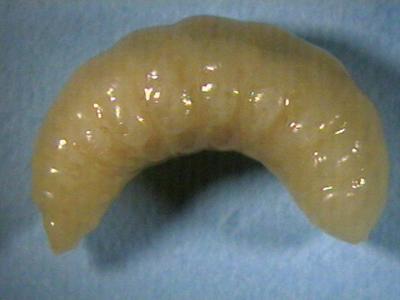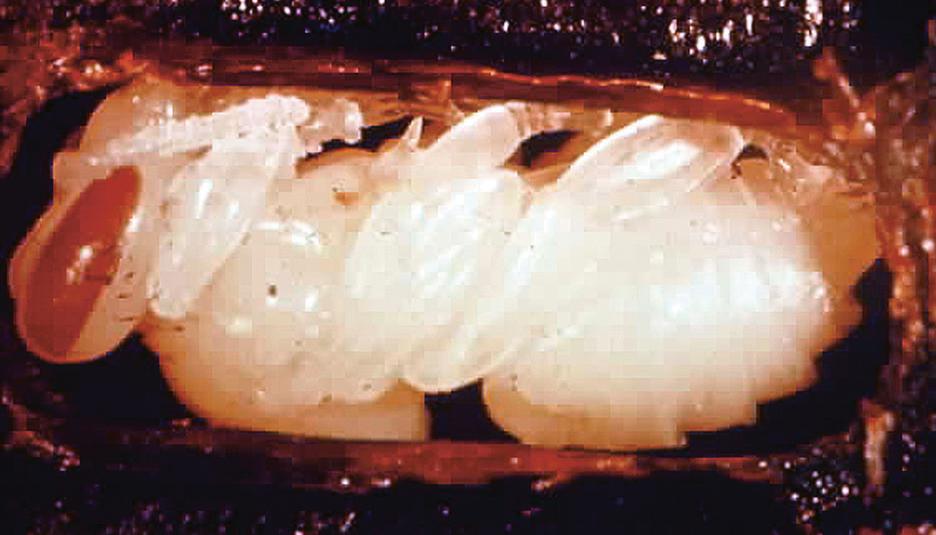It is useful here to review how an individual insect such as a solitary bee develops from egg to adult. An assembly of developing individuals in one nest can form one level of organization that eventually may evolve into a society at yet another level of organization, bringing us full circle.

Most organisms, including humans, simply grow. In contrast, some insects transform from one body type to another as they grow. This transformation, or metamorphosis, is an amazing feat. Bees undergo a complete metamorphosis, as they progress through four developmental stages: egg, larva, pupa, and adult. The most remarkable transformations occur during the pupal stage when the cells, tissues, and organs that were necessary for the larva to function are reorganized and remodeled to accommodate the functions of the future adult.
An adult female bee lays an egg (Figure 3.8), which is white and elongated with a soft membrane around it. The egg is laid directly on the nest substrate or on a mass of pollen that was provisioned by an adult bee.

The egg changes into a larva, a soft white grub with no legs (Figure 3.9). The larva is an eating machine. If the egg was laid on a mass of pollen, the larva is said to have been mass provisioned by the mother, and will spend its larval phase of life engorging itself on the pollen. If the larva was laid directly on the substrate, it will be progressively provisioned, or fed frequently by adult bees. Most bee larvae are mass provisioned. Progressive provisioning of larvae occurs in some species of bumble bee and in all honey bees. In all cases, as the larva eats it must shed its cuticle, or molt, to grow. Honey bee larvae, for example, go through five molts. The larval stages between molts are called instars, so a honey bee larva is said to have five instars. Bumble bees, mason bees, leafcutter bees, and alkalai bees have four or five instars, depending on the species.
At the end of the last larval instar, the larva will stop eating and will defecate for the first time. This sounds like an extraneous fact, but it is an important one. Bee larvae spend their instars resting on the food that is provided or fed to them, and it is important not to contaminate that food with waste. It is an incredible adaptation that in young larvae, there is no connection between the mid and hind gut until the last larval instar.
After defecating, the larva is called a prepupa. In some bee species, the prepupa is the stage that survives the winter, or remains for long periods of time, sometimes over a year, before completing development. Remaining in suspended development is a strategy for timing the rest of development to coincide with floral blooms so the adult does not emerge during a dearth or cold weather.

At some point, either right after defecating or after a period of suspended development, the prepupa of most bee species produces silk from glands located near the mouth and will spin a thin but strong silk cocoon around itself. The silk is secreted from the glands as a liquid, but upon contact with air, solidifies into fine fibers. Within this protected cocoon, the bee, now called a pupa (Figure 3.10) begins the process of reorganization and development of cells, tissues, and organs to transform into the adult body. In bees, the pupal stage proceeds relatively quickly. Bees do not survive winter or long periods of time as pupae. For example, the pupal stage of female (worker) honey bees is about 12 to 13 days. When the pupa has completed its development, an adult bee emerges, or ecloses, from the cocoon.
